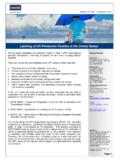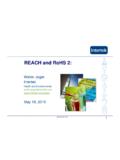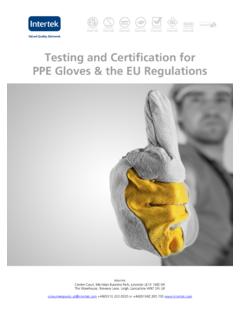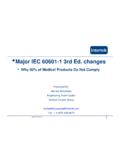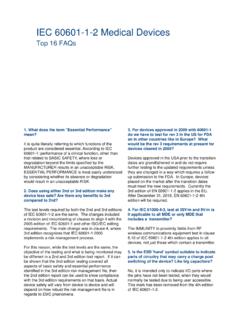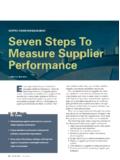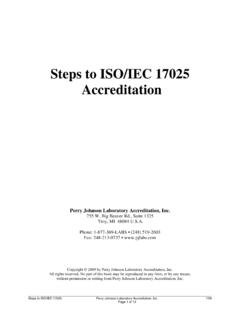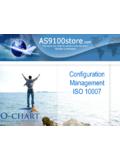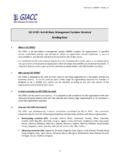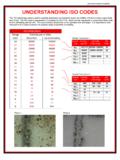Transcription of 5 Steps to Improving the Return on Your …
1 5 Steps to Improving the Return on your management system Calin Moldovean 5 Steps to Improving the Return on your management system 1 Introduction Difficult times make us question the effectiveness and long-term future of everything we do. For years, we used our ISO 9001 management systems certification to gain market access, satisfy customer requirements, streamline processes, and drive continual improvement. Now, it is time to challenge ourselves and use our management systems to help weather the economic storms. Managers often refer to Return on Investment (ROI) as a key indicator of the success of a project. In this article, we ll talk about some of the ways you can measure and improve the Return on management system Investment. In other words, you ll learn how to quantify what your management system and your internal audit program do to give back what the organization puts into it: namely, tools to minimize risk while supporting business strategies and an ongoing pursuit of excellence.
2 When you can prove the business benefits of your management system to your senior management , you help to demonstrate the system s effectiveness and justify its continuation. 5 Steps to Improving the Return on your management system management systems programs (such as ISO 9001 and ISO 14001) were originally implemented to help organizations gain market access, satisfy mandatory customer requirements, streamline processes, manage growth, drive continual improvement, and generally keep up with the competition. In today s business environment full of financial turbulence, eroding bottom lines, decreasing efficiencies, and changing requirements these reasons are no longer relevant. management systems are sometimes misunderstood by senior management as nothing more than a heavy administrative burden: difficult to implement and providing no business benefit or improvement. What they don t understand is that your management system is a way of providing continuity throughout your operations.
3 It s the link between policy, performance, 5 Steps to Improving the Return on your management system 2 objectives, and targets. You might think of it as the rope connecting together the various parts of your business: your management system is more than a manual, and more than the certificate on the wall. It s a critical tool that will help you meet requirements (customer, regulatory, and legal), minimize risks, strengthen your market position, protect the brand, focus on the customer, improve organizational efficiency, and reduce costs. With that in mind, consider these five Steps to Improving the Return on your management system : 1. Strengthen Leadership These are no longer just ISO systems. management systems should be the tools most used by Senior management , not only by Quality or Environmental experts. Therefore, give your senior management team feedback that speaks their language and addresses their needs.
4 Provide the framework to ensure action plans are developed and monitored, and Corrective Action is initiated when targets and business objectives are not being met. 2. Improve Efficiencies Analyze your management system s design and assess its effectiveness to meet current and future challenges, not past ISO requirements. In doing so, you give Senior management the tools to see where there is overcapacity, and provide them with the insight they need to make the right adjustments relative to your organization s needs. Vision Situation analysis Objectives Policy Success factors, environmental aspects, health & safety risks Targets Action plans Processes Control 5 Steps to Improving the Return on your management system 3 To accomplish this, consider the following actions: Review process metrics against business objectives and the current economic environment. Use internal process assessments to focus less on compliance, and more on process improvements.
5 Incorporate applicable improvement tools, such as Six Sigma or Lean, into the overall management system . Integrate your Quality, Environmental, and Health & Safety management systems into a single integrated management system . Extend your learning to the entire supply chain and your business partners. 3. Mitigate Business Risk When you conduct internal and external system assessments, highlight the impact on business risk. Ensure that your management system is inclusive of all processes, including Legal Compliance, Finance, Environmental Programs, and especially Health and Safety. Periodically review the responsibilities and competence of personnel. 4. Exceed Customer Requirements Use your management system to integrate Customer Requirements into every aspect of the business. PDCA and problem solving techniques can help you to gather, analyze and act on customer needs and perceptions not just their complaints.
6 Share your best practices with your customers, and request the same from them. 5. Quantify and Improve the Return on Audits When you transition from compliance to risk-based auditing, you can do more with less : spend more time on fewer processes by focusing on high-risk, bottom-line, and customer-facing activities. By understanding what the internal customer and the Process Owner needs, you can ask the right questions at the beginning of the audit. The audit results should include quantifiable improvements and actionable recommendations, including an evaluation of resources. 5 Steps to Improving the Return on your management system 4 Finally, use only the best staff in your auditing program. Auditors must see their role as business support: part of the problem-solving, not just a must do task. The Future of management Systems management systems are the tools Senior management should always rely on to minimize risks and help achieve company goals and objectives.
7 Effective and continuously Improving management systems programs are the key to minimizing risk, managing growth, and supporting business strategies. And, ultimately, they are your organization s secret to emerging leaner, stronger, and faster from the economic storms. About the Author Calin Moldovean is the President of intertek s global auditing and management systems certification business. He is responsible for continuing the growth of intertek s third- and second-party auditing services, and extending the company s global network of management systems certification personnel. Prior to joining intertek , Mr. Moldovean held the position of North American Vice President of Auditing and Medical Services at another global certification body. Mr. Moldovean holds an in Mechanical Engineering from Transilvania University (Brasov, Romania) and an Executive MBA from Suffolk University (Boston, Massachusetts, USA).
8 He has been a RABQSA certified lead auditor since 1996, and has audited hundreds of organizations across North America, Europe, and Asia. 5 Steps to Improving the Return on your management system 5 intertek : your partner beyond the moment of certification At intertek , we give you more than a certificate we give you the tools to improve your business. Unlike other registrars, we look beyond Stage 1 and Stage 2 to be your business partner at every stage of your management system s life cycle: From sharing best practices and new industry requirements, to assessing your performance against your own objectives, intertek is dedicated to providing audit results that address your business needs and benefit the organization. Visit our website at to learn more. Stage 1 - BuildWe partner with you to plan for certification, find management system gaps and their impact on your businessStage 2 - ConformOur expert auditors work with you to align the audit results with customer requirements and your business needs and objectivesStage 3 - ImproveInsightful audits help you find and implement best practices for continual improvement


